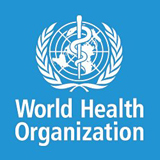
Abstract
Problem
Suboptimal care contributes to perinatal mortality rates. Quality-of-care audit can be used to identify and change suboptimal care, but it is not known if such audits have reduced perinatal mortality in South Africa.
Approach
We investigated perinatal mortality trends in health facilities that had completed at least five years of quality-of-care audit. In a subset of facilities that began audits from 2006, we analysed modifiable factors that may have contributed to perinatal deaths.
Local setting
Since the 1990s, the perinatal problem identification programme has performed quality-of-care audits in South Africa to record perinatal deaths, identify modifiable factors and motivate change.
Relevant changes
Five years of continuous audit were available for 163 facilities. Perinatal mortality rates decreased in 48 facilities (29%) and increased in 52 (32%). Among the subset of facilities that began audit in 2006, there was a decrease in perinatal mortality in 30% (16/54) but an increase in 35% (19/54). Facilities with increasing perinatal mortality were more likely to identify the following contributing factors: patient delay in seeking help when a baby was ill (odds ratio, OR: 4.67; 95% confidence interval, CI: 1.99–10.97); lack of use of antenatal steroids (OR: 9.57; 95% CI: 2.97–30.81); lack of nursing personnel (OR: 2.67; 95% CI: 1.34– 5.33); fetal distress not detected antepartum when the fetus is monitored (OR: 2.92; 95% CI: 1.47–5.8) and poor progress in labour with incorrect interpretation of the partogram (OR: 2.77; 95% CI: 1.43–5.34).
Lessons learnt
Quality-of-care audit was not shown to improve perinatal mortality in this study.